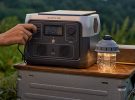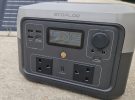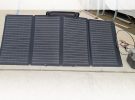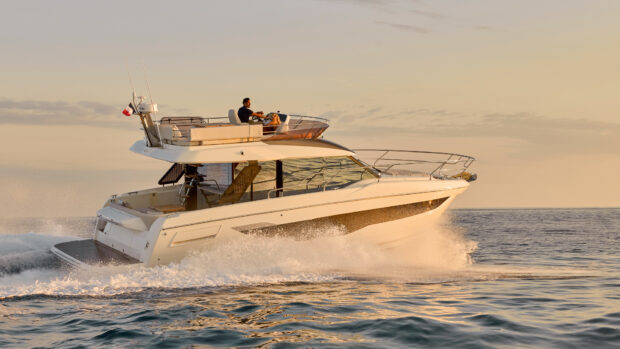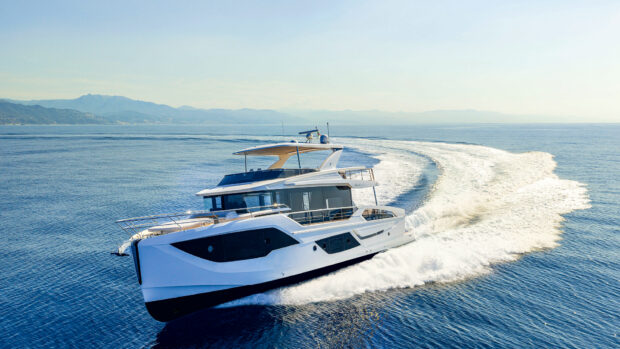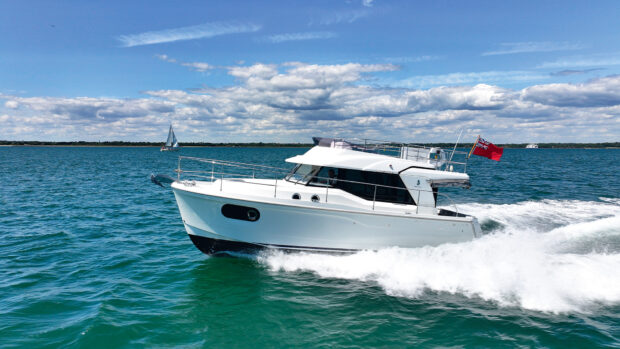Camping, glamping, rv'ing, boating, fishing and just having fun outdoors has all been made easier since lithium power stations came about. This Ecoflow River Max 2 has been on test for 5 months and our tech editor absolutely loves it.

EcoFlow RIVER 2 Max Portable Power Station 512Wh
If you’re in search of a portable power station to keep your devices charged and essentials running during outdoor adventures or emergency situations, the EcoFlow River 2 Max Portable Power station might be the answer.
Specifications:
available with different capacities: River 600 (288Wh) to the River 600 Pro (720Wh)
Output Ports: USB-A, USB-C, DC, and a 12V
Recharge Options: Mains AC, solar panels, or a car charger
built-in pure sine wave inverter up to 500W output
LCD screen displays real-time information about power usage and battery status
weight: 6.1kg
Since the Ecoflow River Max 2 portable power station arrived, barely a day has gone by that it isn’t in use.
You see I live mostly off grid, powered up with a solar panel on my camper van and with both wind and solar on my 1989 boat. I’m quite familiar with working with portable power packs for phones and charging my laptop at any given opportunity. I’m currently working on a 1971 project boat which has pretty much zero electrics onboard (yet), save for the engine starter battery.
Yet I still need to charge my cordless power tools and I still want some lighting, so I have to charge my headtorch and inspection lamp as well as the biolight hanging from a hand rail. I bought a 12v charger for my work laptop (an Apple Air) and frankly, with this little power pack, we are good to go.
The plug in solar panel is a real advantage too, but I’ll get to that in a moment. First the functions of the power pack. It has usb sockets that are always on if the unit is on. So plug in a phone or a usb charger cable and it’ll just crack on with transferring some juice to whatever it is you’ve plugged in.
The DC charger section and the AC charger sections need to be individually switched on when you want to use them and switched off again to save on power drain.
So there’s a standard socket for 12v DV charging that my laptop can go into and then there’s the two AC sockets which when switched on give a familiar cooling fan noise as this activates an inbuilt inverter, from which you can eek 500w of power. This will easily power a hand blender or charge any power tool battery. If you want to boil a kettle though or run a hair dryer, it’s not really designed for that, despite it having a boost option to short term give you up to 1000w. You’ll drain the power pack in minutes if you try that. So pay attention to the power requirements of your appliances.

Ecoflow 160w portable solar panel
The solar panel is a really nicely designed bit of kit too. The zip case that it comes in, converts to the 45 degree support stand to help you angle it at the sun, particularly for when the sun is low in the sky. Most of the time you would lay the panel flat and avoid it being shaded by anything nearby.
I measured how much juice it put back into the unit over an hour on an overcast but bright day in Southampton UK. I plugged in and it was showing 33% charge. After an hour we had 37% charge. At that rate, we would need all of the daylight hours to put up to 30% back into the power bank so, in the UK at least, you can’t rely on one solar panel to fully recharge you everyday. If you are further South where there’s more bright sunny days then you might stand a chance to fully recharge in a day. Bare in mind though that during that charging time I had no drain on the power pack.
It is possible to daisy chain multiple units together to increase your power capacity, but with that comes extended charging times.
I love the portability of this unit as I can easily carry it with me and plug it in to some mains power to give it a charge. So I can take it with me to my office, charge up and then take it away again in the evening.
Frequently asked questions:
How long does it last between charges?
I don’t have many appliances at all, so I’ve dug around and asked what other people use their powerpack to powerup. Here’s a quick guide to what you can run on this power pack:
- Cordless powertool battery chargers (typically 5w-20w) You can charge multiple times before any noticeable power drain
- Small hand blender (typically 150w) normally used in short bursts of 2 to 5 minutes so negligible power consumption.
- Nintendo Switch (18w max) charge this as much as you like, you’ll get 2 days of solid charging
- Dometic Tropicool box (typically 46w on 12v) if your cool box uses 46w, and it’s constantly running on a hot day, you’ll drain the power pack in about 8 hours. If it’s cold weather and the cooler only needs to top up the coolness then you’ll get much longer.
- Small portable television (typically 100w) A television is a real power sucker, so if you want to watch a film you’ll have about 4 hours before your power pack needs a recharge.
- Laptop Apple Air (typically 30w)
- Laptop Surface pro 7 (typically 65w) It takes typically an hour to charge up a laptop so you’ll get about 7 full charges out of it assuming nothing else is plugged in.
- Ipad (typically 20w) You charge an ipad over 20 times before you’ve fully drained the power bank.
Pros
- The EcoFlow River is suitable for various applications, from camping and RV trips to power backup during outages.
- Clean Energy: ideal for charging laptops, cameras, and medical devices.
- chain multiple units together for increased power capacity
Cons
- You have to buy the solar panel separately
- it may not be powerful enough for some users if you want to power multiple high drain devices.




